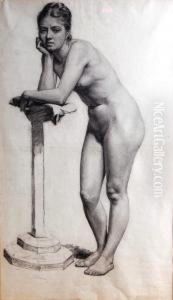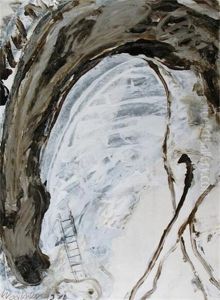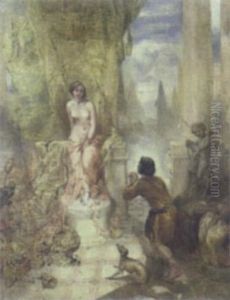Thomas Woolner Paintings
Thomas Woolner was an English sculptor and poet, born on December 17, 1825, in Hadleigh, Suffolk. He emerged as a significant figure in the Victorian era, renowned for his portrait busts and medallions, capturing the likenesses of many notable figures of his time. Woolner was also a founding member of the Pre-Raphaelite Brotherhood, a group of English painters, poets, and critics, founded in 1848 by William Holman Hunt, John Everett Millais, and Dante Gabriel Rossetti. The Brotherhood aimed to revitalize English art by emphasizing the detailed observation of the natural world and the use of vivid colors.
Woolner's early career was significantly influenced by his association with the Pre-Raphaelite Brotherhood, where he contributed the only sculptural work to the group’s endeavors, emphasizing the importance of nature, love, and beauty. Despite his initial focus on idealistic and mythological subjects, Woolner's move to Australia in 1852 (due to the lack of commissions in England) marked a turning point in his career. There, he worked as a gold prospector and produced several notable works, but he returned to England in 1854, disillusioned by his prospects abroad.
Upon his return to England, Woolner's reputation as a sculptor grew, and he received numerous commissions for portrait busts, public statues, and monumental works, including figures such as Charles Darwin and Lord Tennyson, contributing significantly to his acclaim. His works were characterized by their realism and attention to detail, qualities that made his portraits highly sought after. Woolner's skill in capturing the character and essence of his subjects was unmatched, making him a favored sculptor among the Victorian elite.
In addition to his sculptural work, Woolner wrote poetry, publishing several volumes that received modest acclaim. His poems reflected the Pre-Raphaelite ideals of beauty and nature, though they never achieved the same level of recognition as his sculptural works.
Thomas Woolner died on October 7, 1892, in London. His legacy is preserved through his contributions to the Pre-Raphaelite movement and his influence on Victorian sculpture. Woolner's work is held in prestigious collections, including the Tate Gallery and the Royal Academy of Arts, ensuring his place in the annals of British art history.



